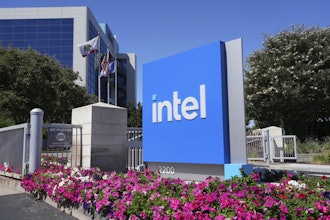
Today, more than ever, business transformation is top of mind for most supply chain executives. The pandemic, which injected unprecedented levels of uncertainty into the sector, has forced manufacturing leaders to rethink their approach to just about everything. The World Economic Forum describes the situation as eye-opening, suggesting the importance of supply chain resilience and risk management is more apparent than ever, while the Harvard Business Review dubs COVID-19 a "wake-up call for supply chain management."
As leaders navigate this unique moment, it’s important to reflect and remember that difficult circumstances can trigger meaningful change. To support the reflective process, these five common transformation triggers shouldn't be ignored.
#1 A Shifting Competitive Landscape.
Today’s business landscape is one of the most unsteady in recent history. By May 2020, more than 100,000 small businesses permanently closed due to financial headwinds initiated by the pandemic and its subsequent health and safety lockdowns. This reality reflects the broad competitive outlook for companies of all sizes. Across the board, bankruptcies have increased by 43 percent year-over-year.
Consequently, old competitors may be less viable and new efficiencies and business models are likely to emerge. In this scenario, new businesses may make significant leaps forward and ultimately, threaten market share. This is the time to reassess the competitive landscape and to determine which companies are no longer viable and which may be better positioned to thrive.
#2 A Strategic Inflection Point
The pandemic has rendered once-formidable business models untenable while also elevating new platforms and methodologies. For example, brick and mortar stores are experiencing significantly less foot traffic while digital retailers are thriving with a 76 percent increase in online sales since the pandemic’s onset. As a result, business strategies and value propositions that were once relevant and effective may need to be updated.
#3 Business Transition
The business landscape is always in flux as organic growth, mergers, takeovers and acquisitions create a dynamic ecosystem with far-reaching repercussions. In response, manufacturing organizations should prioritize diversification, especially during turbulent times. For instance, adding a new product or expanding operations to new geographic regions as a way to facilitate business expansion.
At the same time, companies contract when they become overextended into ancillary sectors or inefficiently deploy their resources. This is a reminder that diversification can be a boon, but must be executed with precision.
#4 Responding to Economic Conditions
Even before COVID-19 became the defining disruptive force of 2020, international trade wars, regulations and tariffs created a need for manufacturing transformation and diversification. According to Forbes, even before the pandemic, China-centered manufacturing was already falling out of fashion, a startling shift for a country once described as “the world’s factory.”
Manufacturing leads may be uniquely accustomed to change, but profound economic conditions, like today’s fragile global economy, represent an opportunity to streamline operational efficiency both now and in the years ahead. Simply put, when everything is going well there is often little incentive to undergo big structural change, even though an agile approach to development is key to long-term sustainability.
#5 A Dismissal of Data
Companies are collecting more data than ever before, allowing them to measure external competition and internal effectiveness. However, if internal benchmarks are not examined closely, it’s easy to miss an opportunity for transformation.
Understanding and staying ahead of the competition is an obvious benefit and can be a valuable way to gauge where your business stands. However, it can also be unsteady, as it’s always subject to change. Internal benchmarks can reveal sharp growth trends or lagging opportunities that prompt new pursuits.
Transformation is needed to survive, but it’s also a profound opportunity for growth. Right now, manufacturers are scrambling to adjust product offerings to meet shifting consumer demand. For some, this moment will overwhelm their capability and they will be unable to thrive. Meanwhile, others will recognize the opportunity to reshape their organizations, assess the signals of transformation and respond accordingly.
Edwin Bosso, founder and CEO of Myrtle Consulting Group, specializes in business transformation, operations improvement and change management.


















